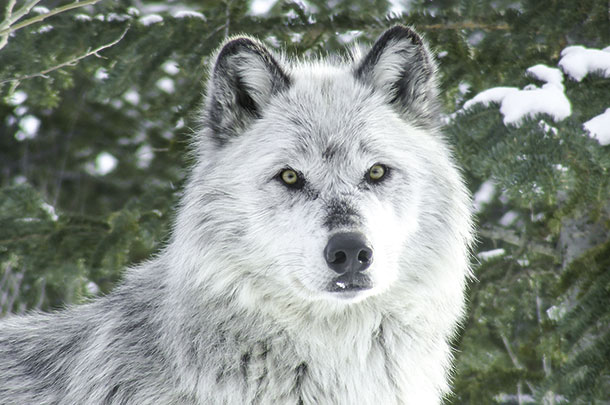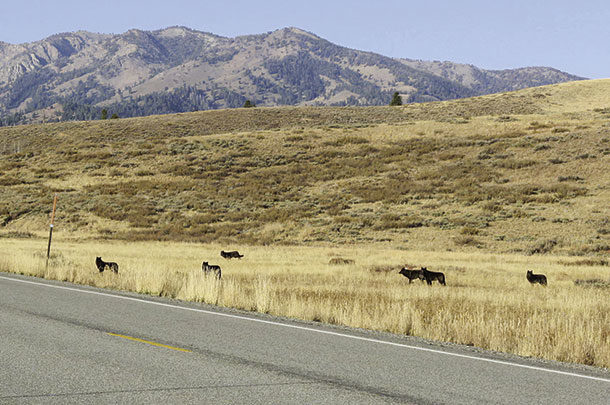For viewers with a long-range vantage point, they are often seen as magnificent animals, and they can be – in the right location and setting.
In 1995, Canadian gray wolves were introduced to central Idaho to meet the requirements of the Endangered Species Act. The original goal was to place approximately 100 wolves, including 10 healthy breeding pairs. When they were delisted from the act in 2011, there were more than 1,000 scattered throughout Idaho. Early 2020 counts show similar numbers.

Domestic animal deaths and depredations have emerged in step with the larger wolf population. Todd Grimm, state director of U.S. Fish and Wildlife Services (FWS) under the USDA, says depredation trends seem to have peaked in 2018. “I’m hoping they don’t re-establish themselves in the upcoming years. Any time it’s over 100, I would say it’s bad, and 2018 was really bad.”
Crunching the numbers
A recent combined USDA and FWS report identified 264 depredation investigations related to wolf complaints for 136 livestock producers in 17 Idaho counties between July 1, 2018, and June 30, 2019. There were 175 confirmed wolf depredations, 16 were probable and the remainder of unknown or other sources. The previous year, 217 investigations confirmed 140 wolf depredations.
Phil Davis, a Cascade, Idaho, cattle rancher, has had his operation directly affected by wolves. “In the last 10 years, we typically have lost between three and seven animals; then in 2018 we actually lost 13.”
The 2011 delisting materialized due to the upsurge in numbers. This timing also signaled the end of compensation from the Defenders of Wildlife organization, a U.S.-based conservation organization. “Before they were delisted, they would always pay for the depredations, actually paying more if the death loss was above normal,” said Davis. “There is still some funding from the federal government through the Office of Species Conservation, but there is typically not enough to reimburse the actual confirmed and probable cases.”
Adding up the losses
Davis points out the damages are not only confined to livestock deaths. He believes many losses come at a time well after wolf attacks. “It took us a while to figure this out, but it’s not the trauma that always causes the death; it’s often caused by myopathy, which is basically overexertion. When the animal exerts itself to the point that its muscles can’t reoxygenate quick enough, they start to die. Myopathy can last for minutes, hours, days, months and even years depending on the extent of the original chase.”
He says financial losses also extend to sickness caused by increased stress levels in the cattle. These stresses can manifest in reduced conception rates in cow-calf operations as livestock behave abnormally when constantly facing the threat of wolves. “There is a different behavior in cattle. There is no question it creates stress and its resulting effects.”
Employing the defenses
Farmers and ranchers have minimal defenses to employ. The use of guard dogs, fladry (flags that act as a visual deterrent), improved fencing and pasture rotation can work but are limited by staffing and pasture sizes. There is also ongoing research on wolf repellents and sound devices to deter them, but all these practices can be costly, labor-intensive and may only provide marginal relief.
Grimm says the best way to prevent wolf depredations is through increased human presence but admits this is hard when it comes to range cattle. “Keeping them in smaller pastures and building fences that are predator-proof is easier for small producers but, for ranchers with 500 to 1,000 head, that’s not going to work.”
He points out a state law indicating a rancher or employee can legally shoot a wolf on sight if it is seen in the process of attacking livestock, but while this can be an option, in today’s societal view, the direct killing of a wolf can lead to a public outcry. In specific cases, ranchers who have shot wolves have faced death threats against themselves and their families.
Ranchers could avoid fall calving, as this is the season when wolves are looking for easy, high-protein food sources to be ready for winter. They should also manage dead pits properly by ensuring they are dug in the fall with available loose soil for winter coverage.
Hunting and trapping seasons have been available since wolves were delisted in 2011 but have produced limited success in reducing depredations. “These are basically established to manage the population statewide, not particularly targeting wolves that are causing problems,” said Grimm.
Davis goes even further. “Wolves are extremely intelligent and really difficult to control. They become leery of traps. We still can’t get a handle on them.”
Removing the problems
Most agree that killing and removing all wolves is not the answer, as only certain animals develop a ‘taste’ for domestic livestock. Selective identification and removal of these problem animals has yielded some success.
Grimm says FWS in conjunction with the Idaho Department of Fish and Game (IDFG), still uses some radio collars to identify, manage and remove problem wolves in high-conflict areas, but ongoing budget cuts plague staffing and limit maintenance abilities vital to the success of control methods.
The recent USDA report states in response to the confirmed wolf depredations on livestock in the designated 2018-19 period, IDFG established or extended 67 control actions for FWS to successfully remove 66 suspect wolves. Seventy-six wolves were removed in the previous year.
Idaho-based farmers and ranchers are not in the business of exterminating all wolves, but their families’ livelihoods depend on the success of the livestock industry. Together with FWS, they seek a balance in the ecosystem where wolves return to hunting wildlife as nature intended.
But it won’t be easy, said Phil Davis. “In my personal opinion, the genie is out of the bottle and it’s going to be pretty difficult to put it back in and deal with this situation.” ![]()
PHOTO 1: A group of wolves in the Phantom Hill pack roam along Highway 75 north of Ketchum, Idaho.
PHOTO 2: Canadian gray wolf. Photos courtesy of Idaho Department of Fish and Game.
Bruce Derksen is a freelance writer based in Lacombe, Alberta. Email Bruce Derksen.








